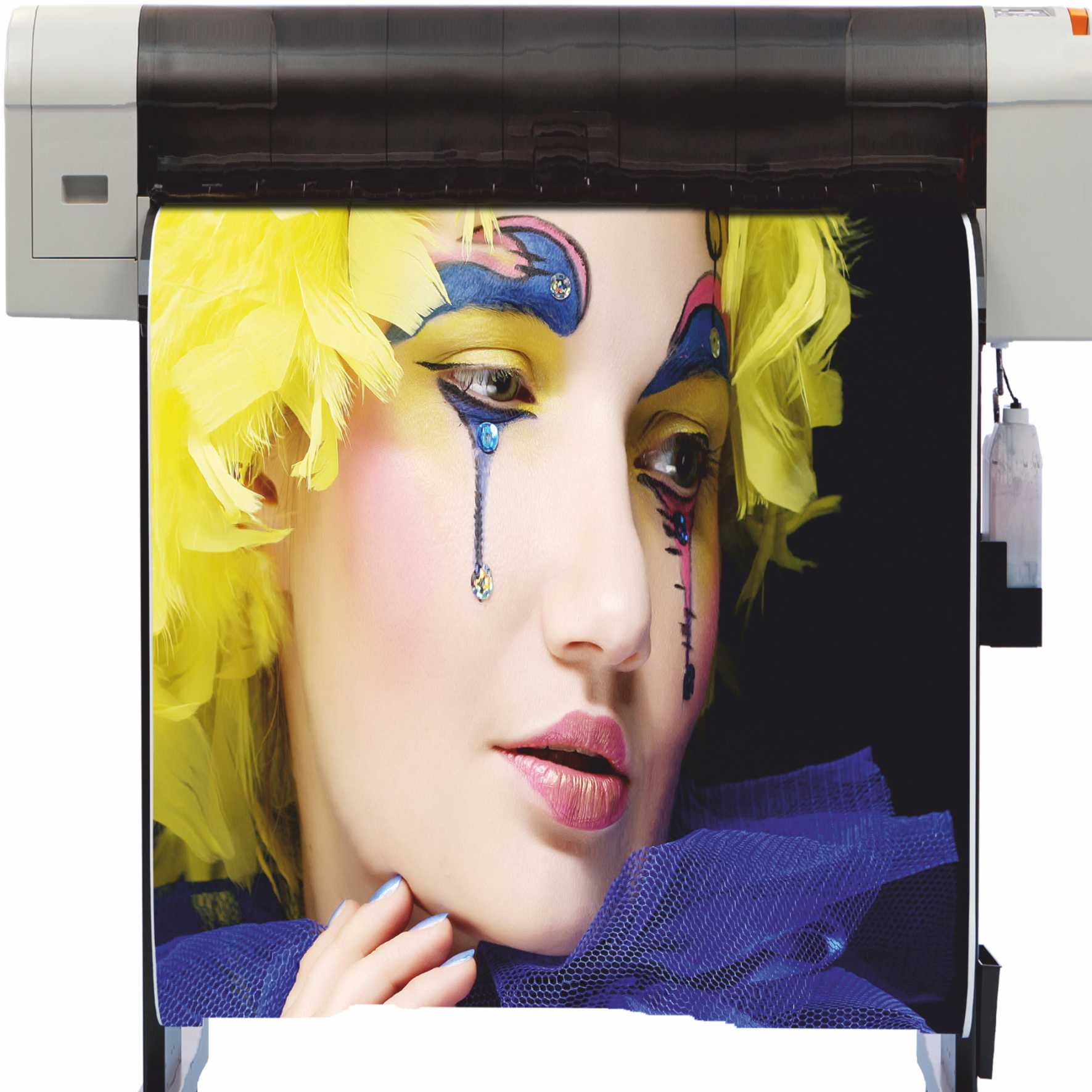Roland’s most successful
authorised dealer for a third year.
 printMAX No 1
printMAX No 1
It’s a hat-trick for UK based printMAX as Roland has confirmed the Hampshire based reseller is its most successful authorised dealer for a third consecutive year running. The coveted title is allocated on the basis of total sales of printers, cutters and Roland inks over the past twelve months.
“Our most successful authorised dealer for 2012 is printMAX”, confirmed Roland DG UK technical director Brett Newman. “This accolade is a testament to their continued hard work and support over the last twelve months,” he said. ” It’s a sincere reflection of their excellent ethos when dealing with Roland customers both old and new.”
printMAX have continued to focus their business offerings around the Roland portfolio, a move which has proven to be a winning strategy for the company. Sales Manager, Chris Martin commented: “At printMAX we aim to not only meet our customers’ expectations but to exceed them in every way. Focusing on the Roland product range has enabled us to provide solutions we truly believe in. As such we are then able to offer expert installation, training and after sales support, with the end goal of providing our customers with peace of mind. The printMAX team know Roland printers inside out, this, partnered with such great technology really is a fantastic combination.”
September saw the long awaited release of the Roland SolJet Pro 4 XR-640, and printMAX went on to sell not only the first unit in Europe but also secured more sales than any other UK dealer. If anything defined the companies determination to be top of the class, this achievement clearly demonstrated it.
Michael Bolton, printMAX MD stated: “I’m elated that following a fantastic couple of years we were able to hold on to the title of Roland’s most successful authorised dealer for an incredible third year running! We strive all year round to support our customers; with the whole team taking the ethos of ‘exceeding expectations’ quite literally every day. To see the rewards at the end of the year is a truly fantastic achievement and I’d like to thank our customers, the printMAX team and our dedicated Roland support staff for making 2012 so successful.”
When asked what we can expect from printMAX for the future, Bolton added, “the last several years have seen year on year growth for printMAX, a real achievement considering the recession that hit both the UK and our industry. If 2013 is anything like recent years we’ll certainly have a great 12 months, continue to grow as a business and will absolutely continue to offer the number one service our customers have come to expect of us.”
You can find printMAX online at www.printMAX.co.uk
Follow us on Twitter - @DigiPrintNews
Like us on Facebook www.facebook.com/dpnlive - click the ‘LIKED’ button/top of page as well
Copyright © 2013, DPNLIVE – All Rights Reserved
Innovative POS designed to clearly
stand out in a busy market.
 Dyson airbladeHH Global, a global marketing services group specialising in the execution of print, digital and retail media, has been awarded a contract with Dyson to design permanent POS for its innovative ‘Airblade’ product. The key requirement of the POS was to keep it in line with the brand image of the iconic household appliance design company.
Dyson airbladeHH Global, a global marketing services group specialising in the execution of print, digital and retail media, has been awarded a contract with Dyson to design permanent POS for its innovative ‘Airblade’ product. The key requirement of the POS was to keep it in line with the brand image of the iconic household appliance design company.
Dyson, a British company, is highly regarded for its state-of-the-art technology and wanted to build on this brand image in the highly competitive French market.
The POS had to be designed with long durability in mind and at the highest quality, to complement Dyson’s ‘Airblade’ design. The research, development and production of the POS was managed though HH Global both in France and the UK. Several concepts were provided to ensure that ‘Airblade’ would clearly stand out in a busy market. The clear, uncluttered and modern design was chosen to contrast with the ‘noise’ in-store.
Robert MacMillan, CEO, HH Global commented: “As such an iconic brand, we were very pleased to work with Dyson on this project. Permanent POS takes more time, resources and creativity, but the end result, we believe, gives better results, not just in terms of image, but importantly in ROI.”
For more information please go to www.hhglobal.com
Follow us on Twitter - @DigiPrintNews
Like us on Facebook at www.facebook.com/dpnlive
Copyright © 2013, DPNLIVE – All Rights Reserved
Press release from the issuing company.
 XeroxLogoIn times of change and transformation, one is given the unique opportunity to look at things differently – to step out of the comfort zone and take a different look at how things get done.
XeroxLogoIn times of change and transformation, one is given the unique opportunity to look at things differently – to step out of the comfort zone and take a different look at how things get done.
With the marketing landscape changing as fast as the Graphic Communications industry, we are re-evaluating how best to reach customers and prospects, and have decided not to participate in IPEX 2014.
As an anchor exhibitor for many years, this decision was not an easy one. But we listened to what our customers were saying around the globe and their direction to us was very clear. They wanted to connect with us in different ways, with regional and personal engagements.
We believe this focus – combined with our current marketing resources – will bring even greater value to our customers. Here are a few ways we are going to make that happen:
• Xerox Premier Partners Global Network: an excellent opportunity to network and learn from the industry’s leading graphic communications providers.
• Xerox Real Business! Live: held in major cities throughout the U.S and Europe, these popular and well-attended day-long sessions offer important insights on business issues and opportunities.
• Thought leadership forums: provide in-depth conversations and education on topics that matter to our customers, often held at the Gil Hatch Center for Customer Innovation in Webster, N.Y.
• Webinars on business development and other topics – valuable information that can be viewed at the convenience of our customers.
• Virtual & on-site trade shows– presented face to face and in multi-media on the Web.
• Social media, including LinkedIn, Twitter, Facebook and blogs.
While change is inevitable – and that means we’ll be doing things differently – our commitment remains the same. We’re dedicated to helping graphic communications professionals grow their business and prosper.
Written by Jeff Jacobson
President, Global Graphic Communications, Xerox Corporation
Follow us on Twitter - @DigiPrintNews
Like us on Facebook at www.facebook.com/dpnlive
Expansion designed to keep up with growth.
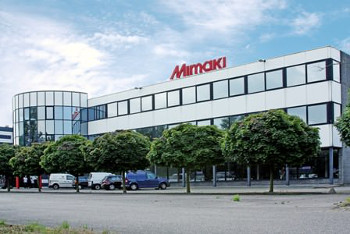 Mimaki Europe’s headquarters in the NetherlandsMimaki has established an EMEA operation which is good news for print service providers in Europe, the Middle East and Africa who will now have easier access to its print systems. The new venture has been set up by Mimaki Euope which has engaged new team members in various departments, ranging from sales and marketing to technical support and logistics. This expanded set-up of Mimaki Europe is designed to help and extend Mimaki’s reach into EMEA.
Mimaki Europe’s headquarters in the NetherlandsMimaki has established an EMEA operation which is good news for print service providers in Europe, the Middle East and Africa who will now have easier access to its print systems. The new venture has been set up by Mimaki Euope which has engaged new team members in various departments, ranging from sales and marketing to technical support and logistics. This expanded set-up of Mimaki Europe is designed to help and extend Mimaki’s reach into EMEA.
The company said it decided to bolster its European set-up following a significant rise in demand after successfully launching a number of innovative products during 2012, and generating strong sales and leads at key European trade shows.
In February, Mimaki attended FESPA Digital and unveiled the JV400-130/160LX – billed as the world’s first environmentally friendly latex printer using white ink. From all accounts it impressed visitors with its high-speed, high-quality output and capability to print on a wide range of substrates. The company simultaneously introduced the JV400-SUV series, which proved a major talking point due to the system’s flexibility in offering solvent printing with the durability of UV-cured inks.
Then in May, Mimaki exhibited at Europe’s premier print show; Drupa. The company presented a number of innovative products, including the JFX500-2131, a next-generation UV-LED flatbed inkjet printer with production speeds up to 60m2/h.
Some months later in September, Mimaki signalled its move into the photography market when it showcased its latest innovations at Photokina. The company demonstrated the UJF-6042, a new A2 format flatbed LED UV printer with high-end quality, making it ideal for printing images on photo albums or other special materials with photo-like quality. The A3 format UJF-3042 desktop flatbed LED UV inkjet printer was also in the spotlight. Again attendees were impressed with how both systems can print photos on virtually any substrate – like iPhone and iPad covers – without any need for priming.
Later that month, Mimaki underlined its green credentials with its attendance at EcoPrint, a sustainability-based trade show. The UJF-3042 was again on show, and was well received due to the printers small environmental footprint and long-life, energy-efficient LED curing. Meanwhile the JV400LX series was praised by delegates for delivering high-quality print with a low CO2 footprint.
In April, Mimaki’s advances in print technology were acknowledged by industry professionals, when the company landed two prestigious European Digital Press (EDP) Association Awards. The awards recognise best-in-class products across the digital print landscape. The Mimaki TS500-1800 scooped the Best Wide Format Textile Printer accolade, while the Mimaki JV400LX Series was named the Best Environmental Printing Solution.
The Mimaki JV400SUV also got in on the prize-winning act at Viscom Frankfurt. The solution won a Best of 2012 Award, in the Large Format Printing category.
In 2012 Mimaki underlined its status as a responsible supplier and reinforced its commitment to decreasing its environmental footprint as evidenced by the companies support for the EcoPrint show. During the event it demonstrated how environmentally-friendly systems can create a more sustainable print infrastructure, without compromising print price, production speed or quality. To highlight this even the Mimaki booth was made from environmentally-friendly natural materials, which the company donated to Möbelwerkstatt Werder, a small organization that makes furniture from recycled wood.
Mimaki also underscored its broad perception on sustainability when it ‘adopted’ a Sumatran tiger at Barcelona Zoo. In doing so, it sponsored the Mimaki Nature Education Program, an initiative that supports educating young people and children on nature and wildlife.
Mimaki is exclusively distributed in the UK & Ireland by Hybrid Services Ltd and its national sales manager, John de la Roche commented, “Looking back at 2012, we received a great response at exhibitions to the Mimaki product range. Receiving prestigious industry awards is testament to how the industry sees Mimaki and our progress with new products, sustainable solutions and the growth of Mimaki in Europe, the Middle East and Africa holds well for the future.”
Mike Horsten, Marketing Manager of Mimaki Europe also said: “We’re really excited about the next chapter for Mimaki. We look forward to offering print houses in EMEA the same level of service and technical support that have proved so popular across Europe.”
Copyright © 2012, DPNLIVE – All Rights Reserved
New packaging applications made possible
by latest printing technology.
 hpHP is participating in a range of UK events designed to demonstrate to packaging and label converters what it believes are the benefits of HP Indigo Digital Printing.
hpHP is participating in a range of UK events designed to demonstrate to packaging and label converters what it believes are the benefits of HP Indigo Digital Printing.
With four presses and two future platforms for packaging and label converters, the company said its Indigo presses offer a number of digital solutions for this market sector - high-quality colour, fast turnarounds, variable data printing and ability to handle a wide range of label, flexible packaging, shrink sleeve and folding carton media. In a variety of event formats, HP will present its technologies as well as its compelling proposition for digital printing.
BPIF Cartons Conference, 3rd and 4th October. HP had an information stand where it focused on its new digital carton press, the HP Indigo 30000 Digital Press for quick-response, small-order quantities. The company also participated in the discussion, "Cartons in 2020," chaired by Josh Brooks, editor, of Packaging News magazine.
The BPIF event ran alongside Packaging Innovations London, 4th -5th October, at the Business Design Centre, Islington, which hosted complimentary seminars in the learnShops Theatre. Julia Cole, marketing manager, UK & Ireland, Indigo Division, HP presented a seminar on the 5th of October entitled "New Digital Age." Its purpose was to explore how digital label, flexible packaging and folding carton printing have the capability to allow brands worldwide create individual pieces on-demand with less waste than traditional methods. She also stressed that digital printing meets the demands of today's customers.
Alon Bar-Shany, vice president and general manager, Indigo Division, HP, will give the keynote address, "Innovation in Digital Packaging: Using New Technologies to Make an Impact," at the Smithers Pira Digital Print for Packaging Conference, 24th – 25th October, at Grange Tower Bridge, London. Bar-Shany's speech will cover the evolution of digital printing and explore what this means for labels and packaging and new packaging applications made possible by the latest printing technology.
On the 27th – 28th February, HP will exhibit at Packtech 2013, at the NEC, Birmingham. The HP digital supermarket is scheduled to be part of the stand in order to demonstrate the wide range of label, shrink sleeve, flexible packaging and folding carton applications which are possible with HP Indigo presses.
"Taking HP's digital label and packaging converting message to these events enables us to engage with our customers on a personal level and promote the benefits of digital print to converters, brand owners and creative’s," said Julia Cole.” "Our packaging initiative is already underway beginning with our participation in the Ultimate Packaging Open House in Grimsby."
The Open House marked the installation of Ultimate Packaging's HP Indigo WS6600 Digital Press. By adding a digital press to conventional packaging converting operations HP maintains that this can open opportunities for creative’s, support end-users in meeting delivery deadlines, and make it possible for packaging converters to develop new business.
More information is available at www.youtube.com/hpgraphicarts and www.facebook.com/HPdesigners
Copyright © 2012, DPNLIVE – All Rights Reserved
Emphasis is on ease of use and straightforward navigation
![]() Mutoh Redesigned SiteMutoh Belgium nv has just released details of its completely revamped www.mutoh.eu website. The new web platform now features a clean uncluttered design, and is based on a simplified structure as well as updated content. Visitors to the updated site can find detailed information on Mutoh Belgium’s organisation as well as on Mutoh’s wide format printers & sign cutting plotters for Sign & Display, Indoor & Digital Transfer and Direct Textile applications.
Mutoh Redesigned SiteMutoh Belgium nv has just released details of its completely revamped www.mutoh.eu website. The new web platform now features a clean uncluttered design, and is based on a simplified structure as well as updated content. Visitors to the updated site can find detailed information on Mutoh Belgium’s organisation as well as on Mutoh’s wide format printers & sign cutting plotters for Sign & Display, Indoor & Digital Transfer and Direct Textile applications.
Mutoh Belgium has placed a high priority on content. The new website features information on the numerous business and application possibilities which can be developed with Mutoh equipment, as well as in-depth product features, performance specifications, movies and unique selling points.
The new site is quick to load, and Mutoh says it has been designed to offer straightforward navigation through convenient and instructive product category landing pages. A handy side menu has also been included which allows easy switching to other products or other sections of the website,is suited for regular desktop usage and is also ready for iPad and tablet PC users as well as fully tuned for social media connectivity.
It also integrates an extensive download site for registered members. Visitors can create a free Mutoh member account to get access to in-depth Mutoh product information, access to Mutoh Belgium’s ICC profiles library, drivers, user tips, and much more.
Copyright © 2012, DPNLIVE – All Rights Reserved
First demonstrations of new Taopix Portfolio 3.3 live at photokina 2012
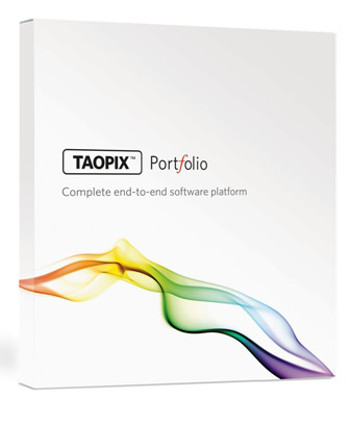 Taopix Portfolio 3.3 will be debuted at photokina 2012UK-based Taopix, the photo merchandise software manufacturer, has launched a new version of its photo software, Taopix Portfolio 3.3, which will debut at photokina 2012 in Cologne this September.
Taopix Portfolio 3.3 will be debuted at photokina 2012UK-based Taopix, the photo merchandise software manufacturer, has launched a new version of its photo software, Taopix Portfolio 3.3, which will debut at photokina 2012 in Cologne this September.
The new software has 50 new features and enhancements for the creation and sale of online photobook and photo gift products and these will be demonstrated live on the companies stand.
These new features are designed to further drive volume sales and increase profitability for photo finishers and digital printers, as well as enhance the overall customer experience.
Poor quality internet hitting rural companies more than urban ones
 A new report of 1500 UK small businesses just released reveals that 57 per cent say that the poor quality of their internet access adversely affects their ability to run their businesses effectively.
A new report of 1500 UK small businesses just released reveals that 57 per cent say that the poor quality of their internet access adversely affects their ability to run their businesses effectively.
The survey released by Freelancer.co.uk, the world’s largest online outsourcing marketplace, is at odds with UK Culture Secretary Jeremy Hunt, who reiterated recently in a speech at the Google Campus building that broadband speed is more important than coverage.
However the small business survey found that 65% of UK small businesses believe that there is still a rural urban Internet divide, with many rural businesses unable to access high speed internet or in some cases access the internet at all. This they believe puts them at a distinct disadvantage to their city competitors and significantly reduces the chance of developing new business opportunities the Internet brings.
From the early 1990s, the agricultural sector of the Democratic Republic of the Congo went through a pretty long period of decline that can be explained by many endogenous factors, mainly political, economic and social internal tensions expressed during the Sovereign National Conference, the 1991 and 1993 lootings and the 1996 and 1998 unrests which actually deepened the crisis to an alarming level.
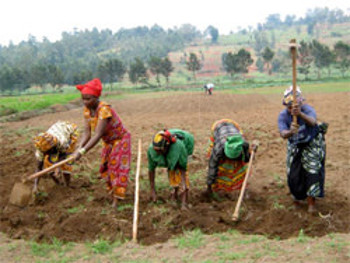 congo-farmingFor any keen observer, it is clearly obvious that agriculture is the basis of the Congolese economy. Its share of the national income reached up to 50% in the 1990s, partly because of the collapse of other productive sectors of the economy (mining in particular). However, since a relative restoration of peace in 2002, this share has gradually declined. But agriculture still provided 40.3% of GDP (against 13% for the mining sector) and employed three quarters of the workforce in 2006.
congo-farmingFor any keen observer, it is clearly obvious that agriculture is the basis of the Congolese economy. Its share of the national income reached up to 50% in the 1990s, partly because of the collapse of other productive sectors of the economy (mining in particular). However, since a relative restoration of peace in 2002, this share has gradually declined. But agriculture still provided 40.3% of GDP (against 13% for the mining sector) and employed three quarters of the workforce in 2006.
More than half of the DRC's land is arable and suitable for farming, with 4 million ha of irrigable land. Specialists say that, based on intensive agriculture, the potential is huge. Unfortunately, the land is largely underused. It could feed 2 billion people. It is estimated that currently, the sector is growing at two per cent per year, but this is slower than the increase in population (2.98% in 2005). Only 1 - 2 percent of the nation's farmable territory has so far been under cultivation at any one time.
The agricultural sector also offers tremendous opportunities for expansion. Almost any type of farming method can be practiced there for a diversified production, considering the agro-climatic diversity, abundance and regular rainfall, and the presence of surface water in large quantities. This explains why, when it comes to poverty reduction and socio-economic development in the DRC, it is recognised that the agricultural sector is probably the most important.
Statistics show that the sector plays an important role in production, with almost 70% of the national workforce and 36% of GDP on average over 2007-2010, 55% in 2010 against 40% in 1960. Agricultural productivity was reduced by 60% between 1960 and 2006 and the vast majority of farms are mostly small subsistence units. As result, one can notice the deep dependency on imports of staple food commodities and 55% household expenditure of food (2008).
There is no doubt that the agriculture sector in DRC can be a crucial engine in the effort made by the country’s government and partners to tackle food insecurity and even malnutrition which are at the origin of poverty, diseases and lack of productivity in the vast majority of the population. Moreover, throughout the whole sector, important measures can be taken to significantly bring down greenhouse gas emissions caused by intensive and extensive commercial agriculture and the level of travelling and subsistence farming on burnt land.
The DRC’s forests could provide a potential source of up to US$900 million in annual revenue up to 2030 through REDD+. The UNEP’s Post-Conflict Environmental Assessment of the DRC, released in October 2011, underlines the extraordinary potential of the country’s forestry resources and other natural endowments. Such potential REDD+ revenue could further enhance the DRC’s transition to a Green Economy.
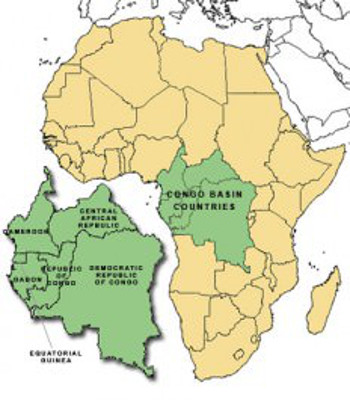 The DRC’s unique and unparalleled agricultural potential and land area in Africa can be better appreciated through looking at some objective natural features. In fact, there is a rainfall of 1000 mm/year. The pedo-climatic conditions are characterised by an equatorial climate in the basin; a tropical climate at the periphery, with alternating seasons on both sides of the Equateur line; and a temperate climate in the East highlands, which offers opportunities for very different cultures. The country has a major river network that ensures the transport of production and supply of different products. In addition, one hundred twenty five million ha of tropical forests work as a reserve of biodiversity, developable lands for agriculture, timber and non-timber forest products (NTFPs).
The DRC’s unique and unparalleled agricultural potential and land area in Africa can be better appreciated through looking at some objective natural features. In fact, there is a rainfall of 1000 mm/year. The pedo-climatic conditions are characterised by an equatorial climate in the basin; a tropical climate at the periphery, with alternating seasons on both sides of the Equateur line; and a temperate climate in the East highlands, which offers opportunities for very different cultures. The country has a major river network that ensures the transport of production and supply of different products. In addition, one hundred twenty five million ha of tropical forests work as a reserve of biodiversity, developable lands for agriculture, timber and non-timber forest products (NTFPs).
Since the country is vast, the average annual temperature varies according to the situation. Thus, it is 25°C at the coast; 24 to 25°C in the northern DRC, the Central Basin, northern Katanga, Kasai, Kinshasa and Bas - Congo; 10°C in the mountainous provinces of the East; and 20°C in the highlands of Katanga. The seasonal diurnal amplitude is high at low latitudes: it varies between 9° and 11°C during the wet season; in the dry season, the gap is even larger than the cloud cover and relative humidity is lower; it reaches 16°C in the extreme north-east and 18° to 19°C in southern Katanga. This variety of averages can be used for an effective crop diversification.
Even back in the 1950s, it was well known that the basin of the Congo provided climate conditions that are suitable for growing oil palm, rubber, coffee, cocoa, banana and cassava, while the savanna areas are suitable for growing cotton, cereals, oil plants and livestock, and mountainous areas with a relatively temperate climate lend themselves to the cultivation of altitude crops such as coffee, tea, potatoes, and more livestock. In fact, the vast tracts available for grazing could help to raise over 40 million head of cattle, the national herd being currently only around 600,000 heads of cattle (1.5 million in 1990).
Agriculture will continue to be a key sector in the stabilisation of the DRC economy. That is why policy and decision makers envision revitalising the productive structure of a rural-based community based on a modern agro-industrial production and strengthening small farmers while ensuring the conservation of natural resources. Hope is that this vision will be realized by the harmonised strategy of the agricultural and rural sector adopted in April 2010.
Four strategic pillars are already identified as follows: (i) improve access to markets, rural infrastructure and trade capacity; (ii) increase crop, livestock, fisheries and artisanal production; (iii) strengthen governance as well as institutional capacity and human resources, (iv) organize the rural world in self-managed structures and provide funding for the sector.
We are convinced that Ireland, with its huge and worldwide recognised expertise in agriculture and food can play a very important role in this sector in DRC. Irish agri-businesses could tap in to opportunities offered by the DRC market and reap the latent possibilities.
Bibliography:
- Etude diagnostique sur l’integration du commerce http://www.enhancedif.org/documents%20FR/DTIS%20french%20documents/french/DRC_DTIS_f_Aug2010.pdf
- http://en.wikipedia.org/wiki/Agriculture_in_the_Democratic_Republic_of_the_Congo
- Republique Democratique du Congo (2011), Document de la Stratégie de Croissance et de Réduction de la Pauvreté (DSCRP) 2
- ANAPI, Investir dans le secteur de l’Agriculture et de l’Elevage, Septembre 2011
- IEWY News14 December 2011: Reduced Emissions from Deforestation Opening Window for Green Economy Transition.
- Laporte, N., Bausch, A., Bush, G., Knox, R. and Ipalaka, J., (2011), Mapping Industrial Agriculture in Central Africa, Democratic Republic of Congo case study, COP‐16 Cancun, Agriculture Day
- http://www.new-ag.info/en/country/profile.php?a=641
- http://geography.about.com/library/cia/blcdrcongo.htm
- http://www.ifdc.org/Nations/Democratic_Republic_of_Congo
Dr Jean-Pierre Eyanga Ekumeloko
Chief Executive Officer
GEE Consulting
Lecturer
Representative of the Bel Campus University of Technology in Ireland and the UK
Tel: 00353(086)3767403
Email: This email address is being protected from spambots. You need JavaScript enabled to view it." mce_' + path + '\'' + prefix + ':' + addy5616 + '\' target="_blank">'+addy_text5616+'<\/a>';
//-->
Website: www.gee-consulting.com
Skype: eyangajp
Copyright © 2012, DPNLIVE – All Rights Reserved



